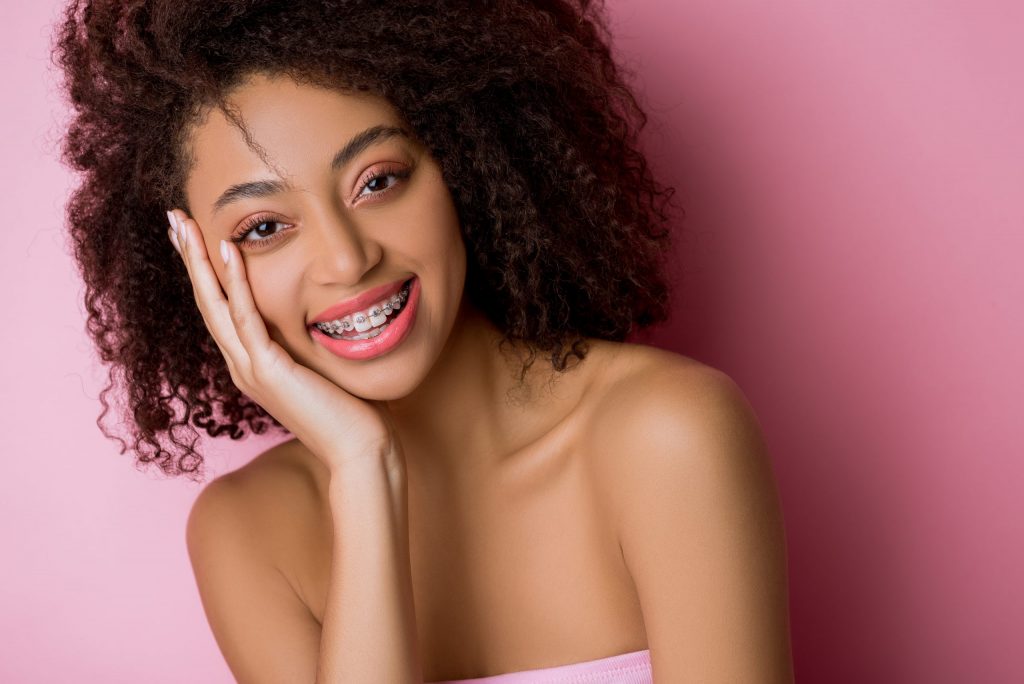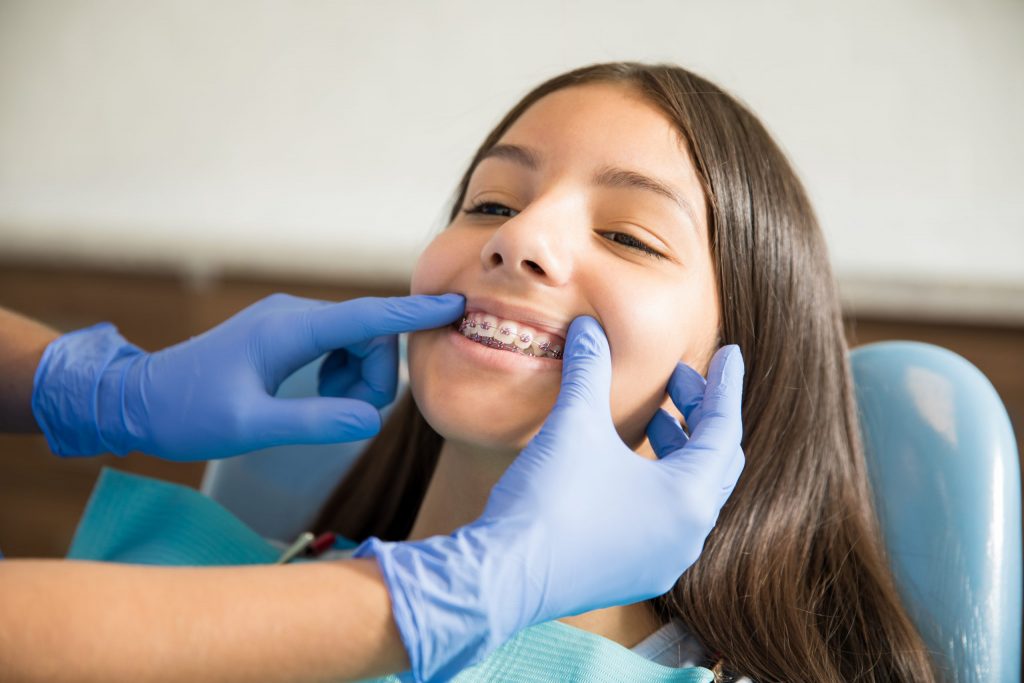 For many children and teens, getting braces on their teeth is a rite of passage. It’s become increasingly common for adults to seek orthodontic treatment as well. In fact, of the more than four million people who wear braces in America, approximately one quarter of them are adults.
For many children and teens, getting braces on their teeth is a rite of passage. It’s become increasingly common for adults to seek orthodontic treatment as well. In fact, of the more than four million people who wear braces in America, approximately one quarter of them are adults.
Regardless of a patient’s age, traditional braces—those that use metal brackets and wires to reposition the teeth—remain the most common type of orthodontic treatment. While some teens and adults opt for invisible braces or aligners to correct crooked teeth, that treatment isn’t appropriate for all patients and situations. At Penn Dental Family Practice, our orthodontists work with you to choose the best treatment option for your needs, helping you achieve a smile you can’t wait to show off.
The following guide will help you better understand traditional braces and, together with your orthodontist, decide whether they are right for you.
What Are Traditional Braces? How Do They Work?
Traditional braces are what most people think of when they hear the term “braces.” They are designed to straighten teeth by applying constant pressure, which slowly moves teeth into the correct position.
Metal braces involve attaching stainless steel brackets to each tooth using a strong dental adhesive. The brackets are connected by wires that attach to the brackets via either rubber bands or metal clips (a type of braces known as ligating braces). To straighten your teeth, your orthodontist will periodically adjust the wires. These adjustments gently guide your teeth into place over time.
While traditional metal braces are the most common, some people—particularly adults—choose other types of braces. Other options include braces with clear or tooth-colored ceramic brackets, which are less noticeable than metal. Some people are also candidates for lingual braces, which involve placing the brackets on the back of the teeth.
How long does treatment take?
On average, treatment time with traditional braces takes between one and three years. Multiple factors influence the length of treatment, though, including how much your teeth need to be moved, how healthy your teeth and gums are, and how well you follow your orthodontist’s instructions for caring for your teeth.
In most cases, you can expect to visit the orthodontist every 4-8 weeks to have the wires adjusted. It’s also important to keep up with your regular oral hygiene, including dentist exams and cleanings, when you have braces. Missing appointments, not properly caring for your teeth, ignoring your orthodontist’s instructions about avoiding certain foods (like gum or hard candy), or damaging the braces can extend the length of treatment.
Who is a Candidate for Metal Braces?
 Both adults and children can use traditional metal braces to correct orthodontic issues. Some of the signs that you should see an orthodontist for consultation include:
Both adults and children can use traditional metal braces to correct orthodontic issues. Some of the signs that you should see an orthodontist for consultation include:
- Overbite (the upper jaw overlaps the bottom jaw)
- Underbite (the bottom jaw overlaps the upper jaw)
- Extra space between teeth
- Crooked teeth
- Teeth that are crowded or overlap
- Irregular jawline
- Shifting jaw
- Pain in the temporomandibular joint (TMJ)
- Pain or difficulty chewing
- Excessive cheek or lip biting
- History of thumb or finger sucking
- Mouth breathing
The American Association of Orthodontists (AAO) recommends that all children see an orthodontist for a consultation by the age of seven, regardless of whether they show signs of any problems. In most cases, braces aren’t used until a child is older and has most of their permanent teeth, but early intervention can identify possible problems and take steps to prevent or treat them without braces.
That said, most children who need braces are best suited for metal braces, which are more effective for growing teeth and mouths. Adults with significant bite issues or malocclusion (crooked teeth when the mouth is closed) also typically have better results with metal braces.
In fact, braces aren’t always necessary, and some orthodontic issues can be corrected with other treatments. A child with a narrow palate that cannot accommodate all their permanent teeth may only need a temporary palate expander to make room. Likewise, a teen or adult with crooked teeth but no significant bite issues could benefit from aligners rather than traditional braces.
The only way to know for sure whether braces are needed—and the best treatment option for your situation—is to see a qualified orthodontist.
More Than Just Straight Teeth
Treating orthodontic problems with braces does more than give you a beautiful smile with perfect, straight teeth. Crooked or misaligned teeth can also contribute to oral health problems. It can be more challenging to thoroughly brush and floss, for example, increasing the risk for cavities and gum disease. Misaligned teeth can also suffer more wear and tear, are more likely to crack or break, and make it difficult to eat, speak, or even breathe.
Getting braces does involve an investment of time and money—the average cost for traditional braces ranges from $3,000-$10,000—but the results are more than worthwhile. In many cases, dental insurance covers some or most of the cost.
You can learn more about the benefits of orthodontic care and wearing braces by downloading our complimentary eBook, “The Benefits of Visiting an Orthodontist: Why Making Your Bite Right is Good For You.” You can also schedule a consultation with a PDFP orthodontist to determine whether you can benefit from braces, and determine the treatment plan that works best for you.


